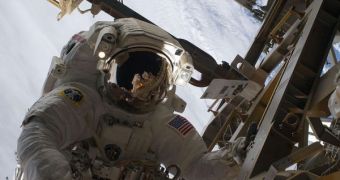Despite having not one, but two landing windows yesterday, the space shuttle Discovery was unable to take advantage of any of them, as stormy clouds and thunderstorms loomed over the Kennedy Space Center, in Cape Canaveral, Florida. According to NASA officials, the seven-member crew aboard the spacecraft have another window of opportunity this evening, at 5:48 pm EDT (2148 GMT). They admit, however, that conditions may actually grow worse by then, and that the storms might intensify.
Florida is notorious for its shifting and highly dynamic weather patterns. They bring forth clouds and lightning over minutes, and clear up the skies in the same amount of time, at unpredictable moments. In fact, mission controllers for the STS-128 flight say, the decision to cancel the shuttle's descent yesterday evening came down from the management as little as eight minutes before the actual related maneuvers were scheduled to begin.
Thursday's landing opportunities began with a planned deorbit burn, scheduled for 5:59 pm EDT [2159 GMT] and a daylight landing at 7:05 pm [2305 GMT] The next opportunity was one hour after sunset, with the deorbit burn at 7:36 pm EDT and the landing at 8:42 pm EDT. According to NASA officials, the space shuttle has sufficient amounts of fuel and other supplies to remain in orbit until Sunday, but they say that the plans are to land the spacecraft by Saturday at the best, which means that a compromise has to be found either today or tomorrow, Space reports.
Just like with Atlantis' last mission, the Edwards Air Force Base, in California, is opened as a contingency runway, in case things in Florida do not go well, and the weather remains dangerous. The minimum recommended distance between the landing site and storm clouds needs to be of at least 30 miles (48 kilometers). Otherwise, the shuttle needs to fly through rain, and could have its sensitive heat shield tiles damaged in the process.

 14 DAY TRIAL //
14 DAY TRIAL //